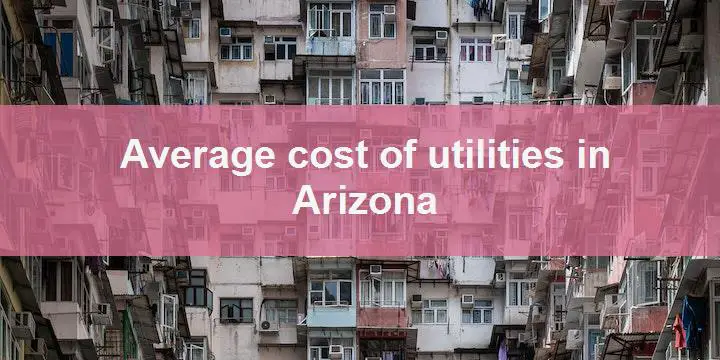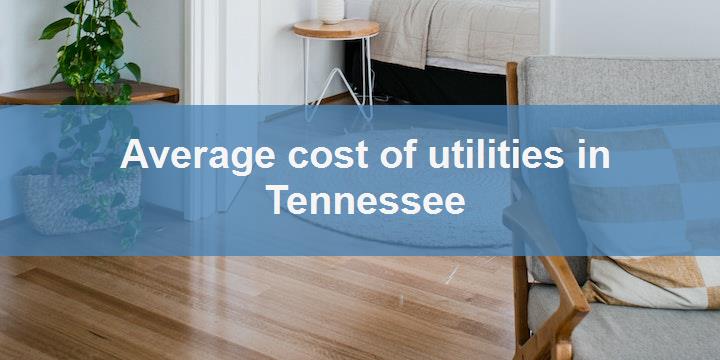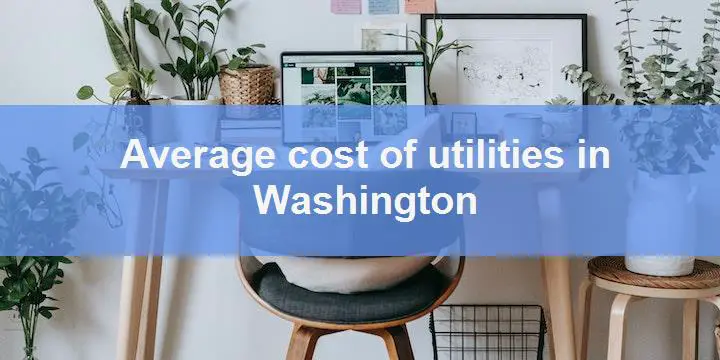Managing your household budget starts with understanding your utility costs—especially in Arizona, where the intense desert heat can significantly impact your expenses. For a family of three living in a single-family home with standard appliances, the average cost of utilities in Arizona is $673.60 in 2025. From higher electricity bills during scorching summers to seasonal shifts in gas and water usage, this guide breaks down the key utility costs you need to know, helping you budget smarter throughout the year.
Average Electric Bill in Arizona
Keeping track of your electricity expenses is crucial for effective budgeting, especially in Arizona, where scorching summers can lead to a noticeable spike in energy consumption. For a family of three living in a single-family home, the average electric bill in Arizona is $151.31 in 2025. This cost reflects the state’s unique climate, with high air conditioning usage during the summer and lower heating demands in the mild winters. The calculation includes both winter ($181.96) and summer ($120.66) electricity consumption to provide a comprehensive view.
Arizona vs. Nevada: Summer Energy Cost Comparison
To help you understand regional differences, the table below compares electricity expenses for a large single-family home with four people during the summer in Arizona and Nevada. This comparison highlights how factors like climate, appliance usage, and household size influence average energy costs between neighboring states.
| Criteria | Arizona | Nevada |
|---|---|---|
| Total Consumption (kWh) | 862.12 kWh | |
| Electricity Rate (cents/kWh) | 14.95 ¢/kWh | 15.35 ¢/kWh |
| Estimated Monthly Cost | $128.89 | $132.34 |
| Detailed Cost Breakdown | ||
| Base Usage: 412.12 kWh | $61.61 | $63.26 |
| Refrigerator: 120 kWh | $17.94 | $18.42 |
| Air Conditioner: 240 kWh | $35.88 | $36.84 |
| Clothes Dryer: 90 kWh | $13.46 | $13.82 |
| Arizona estimated monthly cost is lower than Nevada by 2.61%. | ||
Historical Trends in Electricity Prices
The chart above illustrates historical electricity price trends for large single-family homes in Arizona during the summer. It provides valuable insights into how energy costs have shifted over time, influenced by changing weather patterns, energy demand, and fluctuations in utility rates.
Electricity Cost Comparison Across Various States
Here is a detailed comparison of electricity costs across different states, considering various household types and seasons. This table offers a comprehensive view of utility expenses.
| State | People | Household Type | Season | Appliances | Electric Monthly Bill |
|---|---|---|---|---|---|
| New York | 3 | One-bedroom apartment | Summer | Fridge, AC, Dryer |
$148.77 |
| California | 4 | Single-family large | Winter | Heater, Dryer, Fridge |
$407.08 |
| Texas | 3 | Townhouse | Winter | Heater, Dryer, Fridge |
$168.56 |
| Florida | 3 | Single-family small | Summer | Fridge, AC, Washer |
$102.05 |
| Illinois | 3 | Two-bedroom apartment | Summer | Fridge, AC, Washer |
$98.75 |
| South Carolina | 2 | Studio | Winter | Heater, Fridge |
$124.51 |
| Arizona | 2 | Townhouse | Summer | Fridge, AC, Washer |
$99.04 |
For a more detailed and personalized utility expense estimate, check out our Electricity Bill Calculator. Adjust the parameters to match your household specifics and get an accurate estimate tailored to your needs.
Average Gas Bill in Arizona
Keeping track of your gas expenses is essential for effective household budgeting, especially in Arizona, where the climate significantly impacts energy consumption. For a family of three living in a single-family home, the average gas bill in Arizona is $255.97 in 2025. Arizona’s extremely hot summers and mild winters influence gas usage patterns, with higher consumption during colder months for heating appliances ($374.93) and steady use in summer for essentials like grills and water heaters ($137.00).
Arizona vs. Nevada: A Summer Gas Usage Comparison
To give you a clearer picture of gas expenses, the table below compares the summer gas costs for a large single-family home with four people in Arizona and Nevada. This comparison highlights how factors like climate, household size, and energy habits influence gas usage and costs across neighboring states.
Gas Bill Comparison Overview
| Criteria | Arizona | Nevada | Avg. USA |
|---|---|---|---|
| Total Consumption (MCF) | 6.99 MCF | ||
| Gas Rate ($/MCF) | $23.41 | $19.92 | $17.73 |
| Estimated Monthly Cost | $163.68 | $139.29 | $123.97 |
| Appliance Cost Breakdown | |||
| Outdoor Grill | $12.92 | $11.00 | $9.79 |
| Water Heater | $94.76 | $80.64 | $71.77 |
| Gas Stove | $21.54 | $18.33 | $16.31 |
| Gas Oven | $34.46 | $29.32 | $26.10 |
| Arizona's estimated monthly cost is higher than Nevada by 17.51%. | |||
| Arizona's estimated monthly cost is higher than the Avg. USA by 32.03%. | |||
Historical Trends in Gas Prices
The chart above showcases historical gas price trends for large single-family homes in Arizona during the summer. It provides valuable insights into how gas costs have evolved over the years, influenced by seasonal demand, shifts in energy prices, and household consumption patterns.
Gas Cost Comparison Across Various States
Here is a detailed comparison of gas costs across different states, considering various household types and seasons. This table offers a comprehensive view of utility expenses.
| State | People | Household Type | Season | Appliances | Gas Monthly Bill |
|---|---|---|---|---|---|
| New York | 3 | Townhouse | Summer | Water heater, Stove, Oven |
$88.71 |
| Alabama | 2 | Studio | Summer | Water heater, Stove, Oven |
$64.76 |
| Vermont | 4 | Single-family small | Winter | Gas heating, Dryer, Oven |
$298.95 |
| Texas | 3 | Townhouse | Winter | Gas heating, Dryer, Oven |
$279.14 |
| Illinois | 3 | Single-family small | Summer | Water heater, Stove, Oven |
$79.83 |
| Georgia | 4 | Single-family large | Summer | Water heater, Stove, Oven |
$172.91 |
| Oklahoma | 2 | Studio | Winter | Gas heating, Dryer, Oven |
$170.61 |
For a more detailed and personalized utility expense estimate, check out our Gas Bill Calculator. Customize the parameters to match your household specifics and get an accurate estimate tailored to your needs.
Average Water and Sewer Bill in Arizona
When managing your household budget or planning a move to Arizona, understanding water and sewer costs is crucial—especially in a state where water scarcity can impact expenses. In 2025, the average water and sewer bill in Arizona is $64.00. Given Arizona’s arid climate, water conservation efforts and infrastructure investments play a significant role in shaping these costs for both residents and real estate investors.
Arizona vs. Other States: A Water & Sewer Cost Comparison
To provide perspective, the table below compares Arizona’s water and sewer fees with neighboring and nearby states, highlighting how geographical and environmental factors influence costs:
| State | Average Water and Sewer Fees |
|---|---|
| California | $77.00 |
| Nevada | $46.00 |
| Utah | $58.00 |
| Colorado | $39.00 |
| New Mexico | $62.00 |
| Texas | $57.00 |
| Oregon | $76.00 |
| Washington | $75.00 |
| Idaho | $48.00 |
| Montana | $58.00 |
| Wyoming | $73.00 |
Arizona’s water and sewer fees remain competitive, especially when compared to states like California and Nevada, where higher costs often reflect greater demand and resource management challenges.
Innovative Water Management in Arizona 🌵
Arizona’s arid climate has led to the development of cutting-edge water management strategies to ensure sustainability and efficiency:
- Xeriscaping: Landscaping with drought-resistant plants to significantly reduce water consumption.
- Aquifer Storage and Recovery: Storing excess water during wet periods and retrieving it during droughts to maintain a stable supply.
- Advanced Irrigation Systems: Smart technology that adjusts water usage based on real-time weather data, optimizing efficiency.
- Desalination Projects: Exploring desalination to diversify water sources in areas with limited freshwater availability.
Community Programs Supporting Water Conservation 💧
Arizona actively promotes water conservation through various community-driven initiatives:
- Rebate Programs: Offering financial incentives for installing water-efficient appliances and fixtures in homes and businesses.
- Public Awareness Campaigns: Educating residents on sustainable water practices through workshops and outreach programs.
- Innovation Grants: Supporting projects focused on advancing water conservation technologies and practices.
Sustainability at the Core 🌍
Arizona’s commitment to sustainability is reflected in its progressive water management policies. These efforts not only help conserve natural resources but also support long-term affordability and resilience in the face of climate change.
Final Thoughts
With competitive water and sewer costs, proactive water management strategies, and strong community support for conservation, Arizona offers a balanced approach to utility expenses. Understanding these factors will help you make informed decisions, whether you’re budgeting for your household or exploring real estate opportunities.
Garbage/Trash Removal Costs in Arizona
When it comes to managing household expenses, it’s not just utilities like electricity and water that matter—garbage and trash removal costs in Arizona are key budget considerations. In 2025, the average cost for garbage and trash removal services in Arizona is $25.00. These costs can vary based on factors like the frequency of pickup, bin size, and whether services like recycling or bulk waste removal are included.
In major cities like Phoenix and Tucson, waste management services are known for their efficiency and environmental focus. Arizona’s strong recycling programs and waste reduction initiatives not only promote sustainability but also influence pricing structures. While eco-friendly services might slightly affect overall costs, they ensure a cleaner, greener approach to waste management.
Arizona vs. Neighboring States: Garbage Removal Cost Comparison ♻️
To give you a better perspective, here’s how Arizona’s average garbage and trash removal costs compare with neighboring states:
- Nevada: $29.00
- New Mexico: $25.00
- California: $35.00
- Texas: $25.00
- Utah: $24.00
Arizona’s garbage removal costs are relatively moderate compared to states like Nevada and New Mexico, where different service models may lead to slightly lower fees. However, Arizona’s pricing reflects the value of its comprehensive waste management services, which include advanced recycling and sustainability programs, especially in urban areas.
Why It Matters for Your Budget 💡
Understanding these costs helps you plan your household budget more effectively. Whether you’re moving to Arizona or reassessing your current expenses, factoring in waste management fees ensures there are no surprises. If you have questions or need personalized insights, we’re here to assist you with all your utility management needs in Arizona.
Internet and Cable TV Expenses in Arizona
In today’s connected world, managing your internet and cable TV expenses in Arizona is a key part of household budgeting. As of 2025, the average cost for internet and cable TV services in Arizona is $112.66. These expenses can vary based on factors like your location within the state, the provider you choose, and whether you opt for standalone services or bundled packages.
Arizona offers a diverse range of internet and cable TV providers, fostering healthy competition that keeps prices competitive while ensuring reliable service across urban areas like Phoenix and Tucson, as well as rural communities. Whether you need blazing-fast internet for remote work or a comprehensive TV package, there’s a provider to match your needs.
Internet and Cable TV Provider Costs in Arizona 💻📺
Here’s a quick comparison of average prices from some of Arizona’s major internet and cable TV providers:
| Provider | Internet Price | Cable TV Price | Bundle Price |
|---|---|---|---|
| Comcast | $58.99 | $69.99 | $113.99 |
| Verizon | $59.99 | $70.99 | $120.99 |
| AT&T | $54.99 | $65.99 | $102.99 |
Each provider offers a variety of packages, making it essential to compare plans based on your specific needs. Whether you’re focused on high-speed internet for streaming and gaming, premium TV channels, or cost-effective bundle deals, Arizona’s market has options to fit every budget.
Arizona vs. Neighboring States: A Regional Cost Comparison 🌍
Curious how Arizona’s internet and cable TV costs stack up against other states? Here’s a comparison of average expenses:
- California: $116.32
- Nevada: $116.32
- New Mexico: $112.66
- Utah: $113.66
- Colorado: $113.66
- Texas: $114.66
- Oregon: $116.32
- Washington: $116.32
Arizona’s internet and cable TV costs are generally moderate compared to neighboring states like California and Nevada. This comparison highlights the importance of shopping around to find the best deals tailored to your household’s needs.
Tips for Getting the Best Value 📊
To get the most out of your budget, consider these quick tips:
- 💡 Compare providers regularly to take advantage of new promotions and bundle deals.
- 🌐 Prioritize internet speed if you work from home, game, or stream frequently.
- 📺 Opt for customizable TV packages to avoid paying for channels you don’t watch.
By comparing providers and packages, you can strike the perfect balance between cost, speed, and service quality. Whether you’re a new resident or reevaluating your current plan, Arizona offers plenty of competitive options to keep you connected without breaking the bank.
Home Phone and Mobile Phone Costs in Arizona
In today’s digital world, staying connected isn’t just a convenience—it’s a necessity. That’s why understanding home phone and mobile phone costs in Arizona is essential for managing your household budget. As of 2025, the average cost for home and mobile phone services in Arizona is 64.66. These costs can vary based on your location, service provider, and the specific plan you choose.
Arizona’s diverse landscape of service providers offers residents a range of options tailored to different needs and budgets. Whether you’re in bustling Phoenix or a quieter rural area, competitive pricing ensures reliable service across the state. From unlimited data plans to cost-effective family bundles, there’s something for everyone.
📞 Phone Service Provider Prices in Arizona
Here’s a snapshot of average mobile and home phone prices from leading providers in Arizona:
| Provider | Mobile Phone Price | Home Phone Price |
|---|---|---|
| Verizon | $69.99 | $36.99 |
| AT&T | $64.99 | $31.99 |
| T-Mobile | $58.99 | Doesn’t provide |
Each provider offers unique plans, from unlimited data packages to pay-as-you-go options. When comparing, consider key factors like network coverage, data limits, international calling, and additional perks such as streaming subscriptions or discounts for bundling services.
📊 How Arizona’s Phone Costs Compare to Other States
Wondering how Arizona stacks up? Here’s a comparison of average mobile phone costs across several states:
- California: 66.66
- Nevada: 64.66
- Utah: 65.66
- New Mexico: 63.66
- Colorado: 63.66
- Texas: 64.66
- Oregon: 68.32
- Washington: 68.32
Arizona’s phone costs are generally competitive, especially when compared to neighboring states like California and Nevada. This makes it worthwhile to explore different providers and plans to secure the best value for your budget.
💡 Tips for Saving on Phone Plans
Looking to cut costs without compromising service? Here are a few quick tips:
- 📱 Compare Regularly: Providers often introduce new promotions—don’t miss out by sticking to outdated plans.
- 📞 Bundle Services: Combining mobile, home phone, and internet services can lead to significant discounts.
- 🌍 Evaluate Your Usage: Choose plans that match your data and calling needs to avoid paying for unused features.
By reviewing available phone plans regularly, you can ensure you’re not overpaying for services. Providers frequently update their offerings, so staying informed helps you secure the most cost-effective and feature-rich options. 📞📱
Stay Updated! 🔄 We refresh this article monthly with the latest rates and insights, so be sure to check back for the most up-to-date information on Arizona’s phone service costs.
FAQ
Q: 💡 What is the average monthly electric bill in Arizona in 2025 ?
A: The average monthly electric bill for Arizonans in 2025 is approximately $151.31.
Q: 🔥 What is the average monthly gas bill for Arizonans in 2025 ?
A: The average monthly gas bill for Arizonans in 2025 stands at approximately $255.97.
Q: 🚰 What is the average monthly water and sewer bill in Arizona in 2025 ?
A: The average monthly water and sewer bill in Arizona in 2025 is around $64.00.
Q: 🗑️ What is the average monthly garbage and trash removal cost in Arizona in 2025 ?
A: The average monthly garbage and trash removal cost in Arizona in 2025 is about $25.00.
Q: 📡 What is the average monthly internet and cable TV bill in Arizona in 2025 ?
A: The average monthly internet and cable TV bill in Arizona in 2025 is approximately $112.66.
Q: 📱 What is the average monthly home and mobile phone bill in Arizona in 2025 ?
A: The average monthly home and mobile phone bill in Arizona in 2025 is around 64.66.
Q: 🧾 What is the total average monthly cost of utilities in Arizona in 2025 ?
A: The total average monthly cost of utilities in Arizona in 2025 is approximately $673.60.



